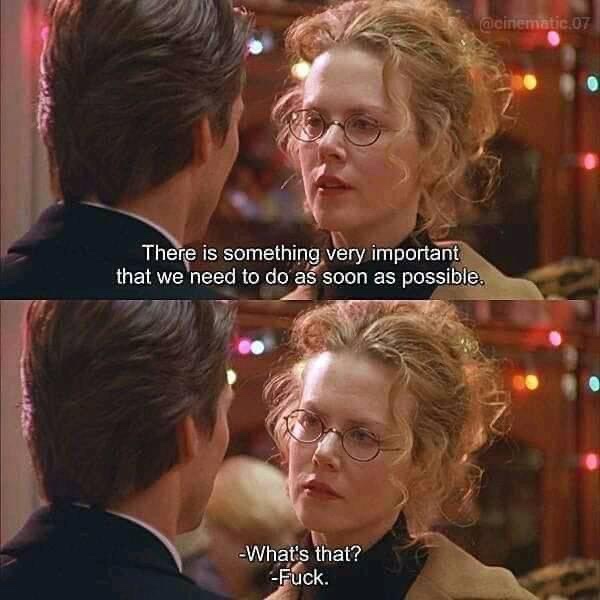A somewhat old-school hotshot studio exec (i.e., not a straight-to-streaming guy) recently blurted out the following to The Ankler’s Richard Rushfield:

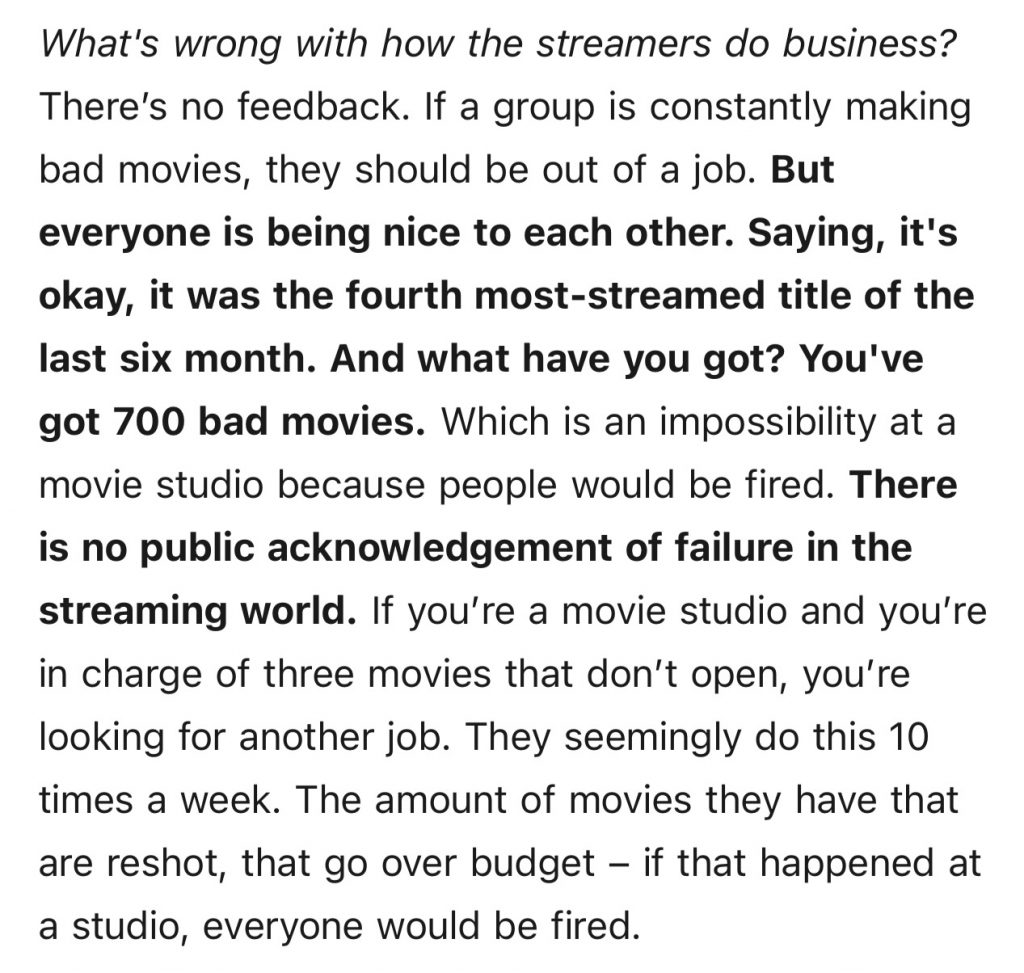
A somewhat old-school hotshot studio exec (i.e., not a straight-to-streaming guy) recently blurted out the following to The Ankler’s Richard Rushfield:


One unvaccinated 50something Texas guy has died from the Omicron variant. The first such publicly acknowledged death in the U.S. Panic in the streets! Terrible, ruthless Omicron has snuffed out the life of one…fucking…guy.

…in keeping the Oscar brand at least semi-alive and semi-relevant…if the Academy is interested in embracing at least some movies that really and truly connect with ticket-buyers…then the membership needs to shake itself out of its woke stupor and at the very least (a) nominate Spider-Man: No Way Home for Best Picture as well as (b) Chris McKenna and Erik Sommers for Best Adapted Screenplay.
Remember all the hoo-hah when The Dark Knight wasn’t nominated for Best Picture and people said “this is a prime example of the Academy being out of touch with real audiences”? Well, we’re right back in that situation again, only more so. People deeply admired that Chris Nolan film, but I don’t recall them howling and cheering during the good parts.
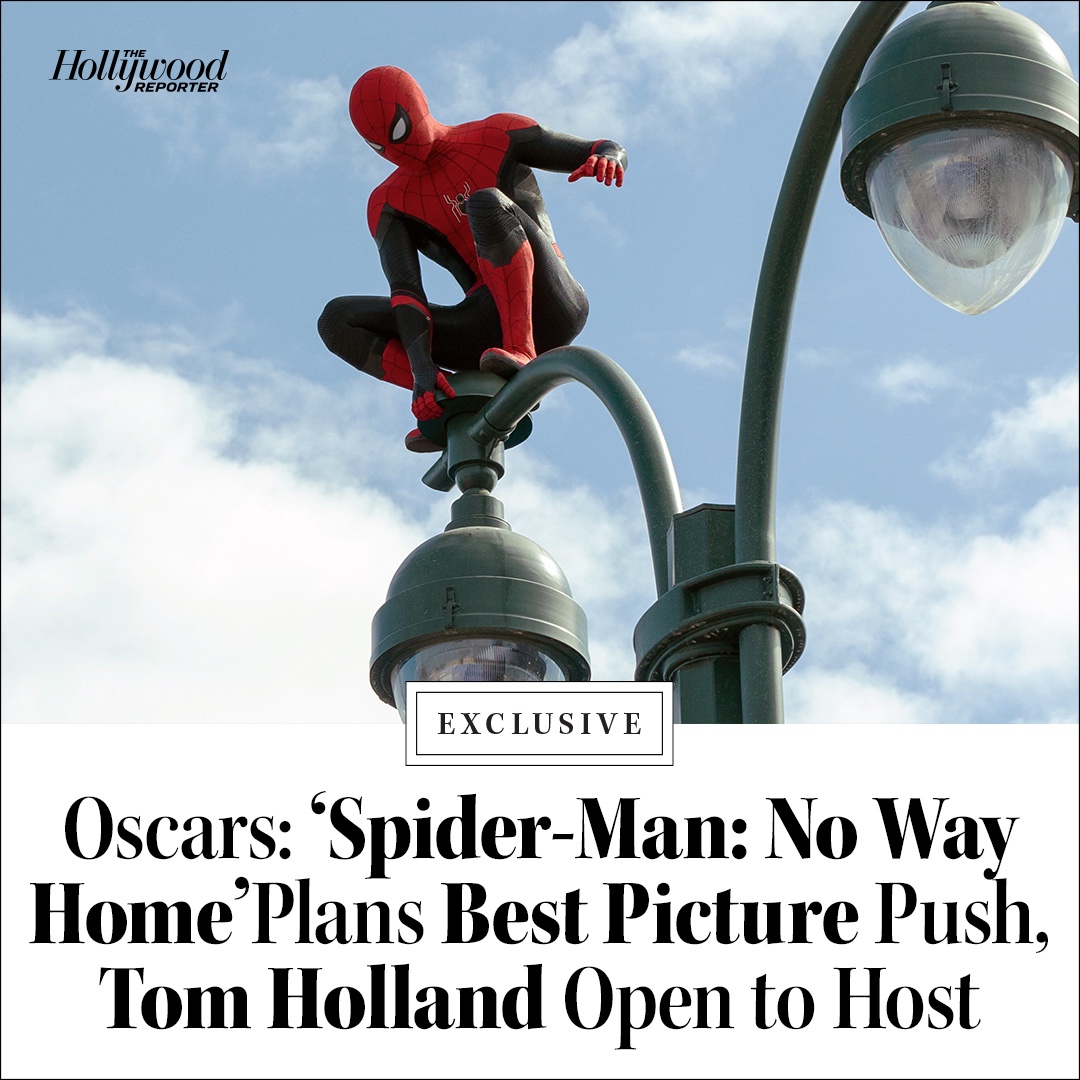
If the Academy doesn’t at least recognize that No Way Home has hit the magic spot with audiences like no other film this year, they will deserve to be ignored and forgotten forever. If they ignore No Way Home they will have demonstrated to the audience — the people who still occasionally flirt with the idea of going out to a movie — they will have demonstrated that they don’t fucking get it….that they’re living on their own cloud, in their own little corner of the world.
I understand, of course, that the winner of the Best Picture Oscar will be either Jane Campion‘s The Power of the Dog, easily the grimmest downer among the leading Best Picture contenders, or Kenneth Branagh‘s Belfast, a sentimental period flick that some people love for its kindly family vibes, or perhaps West Side Story or King Richard…one of these will win but if the Academy ignores the cheering in theatres happening right now across the country, it will deserve what happens as a result.
The wokesters have all but killed the lore of movies and the Oscars to boot, and if next March’s Oscar telecast is another Soderbergh-styled thing…forget it, the game will be 100% over.
Critical Drinker, 9:14: “Christmas truly is the time of miracles. When I think about how much I enjoyed No Way Home and what I liked so much about it, I can’t shake the feeling that despite all the flashy action scenes and snarky dialogue, this doesn’t really feel like a current-year Marvel movie. There’s no clumsy social commentary, no divisive political posturing, no overpowered and completely unlikable strong female characters and no mean-spirited deconstruction of legacy heroes and villains.
“There’s something wonderfully old-fashioned about this film and its approach to story-telling. It reminded me of a time when movies united rather than divided people. It reminded me that superhero films are actually allowed to be fun and magical and uplifting…that they can be an escape from the cares and worries of the real world for a few hours…that they can still make people feel good. It’s almost like when you stop trying to push ‘the message’ and just concentrate on telling a good fucking story, people respond to it.
“If anyone in Hollywood still cares about entertaining their audience and making money, they would do very well to follow the example set by No Way Home. I fucking loved it, and I give it a whole-hearted recommendation.”
A Covid Omicron blizzard is descending upon Los Angeles…upon the entire world. Suddenly it’s the spring of ’20 all over again. The Palm Springs International Film Festival Awards (Thursday, 1.6.22) have been cancelled. The physical attendance side of Sundance ‘22 is almost certainly going south. The BAFTA tea has been cancelled. You name it, the plug is being pulled “out of an excess of caution”.
Wait…the 2022 Critics Choice awards telecast is going ahead with the show.
But tell me, please just tell me….where is the hard medical evidence that Omicron is wreaking terrible devastation in terms of overstuffed hospitals, soaring death rates, piles of bodies in refrigerated trucks, etc.? Where is the evidence that symptoms for fully-vaxxed infectees are any worse than those of a two-week flu, if that?
As usual, I’m blaming the bumblefuck vaccine refuseniks. Corner these ayeholes and forcibly inject them. Their howls of protest will be music to my ears.
From Dana Milbank’s 12.17 Washington Post piece that quotes a learned analysis that the U.S. is “closer to civil war than any of us would like to believe”:
“Things deteriorated so dramatically under Trump, in fact, that the United States no longer technically qualifies as a democracy. Citing the Center for Systemic Peace’s ‘Polity’ data set — the one the CIA task force has found to be most helpful in predicting instability and violence — Barbara Walter writes that the United States is now an “anocracy,” somewhere between a democracy and an autocratic state.
“’We are no longer the world’s oldest continuous democracy,’ Walter writes. ‘That honor is now held by Switzerland, followed by New Zealand, and then Canada. We are no longer a peer to nations like Canada, Costa Rica and Japan, which are all rated a +10 on the Polity index.’
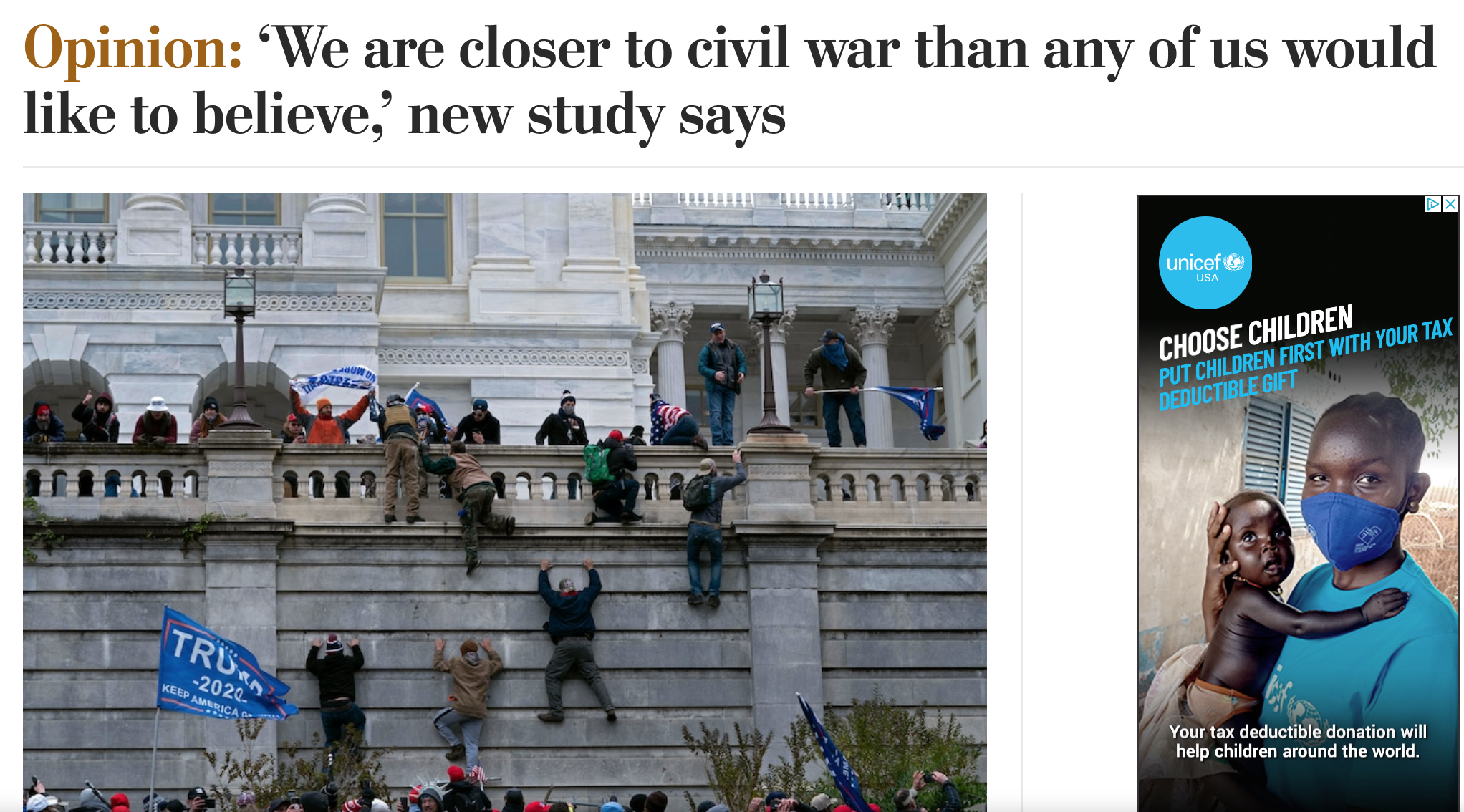
The Northman poster looks like a standee you might see in the Cannes marketplace in the basement of the Palais. Whatever Robert Eggers‘ forthcoming film may turn out to be, I hate the “sell” of it, which is aimed at the knuckle-dragging Games of Thrones crowd. The film is violent, yes, but it’s based on the story of classic medieval saga of Amleth (Hamlet), and the Focus Features marketers are trying to de-Shakespeare-ize it by aiming at the commoners. Come and get your mythical lone warrior revenge saga buffet…Jesus, it’s like a medieval Revenant mixed with a Mel Gibson movie. Bashings, howlings, bruisings, helmets, swords, axes, beheadings, amber-lit interiors, snowfalls, mud, grimness…blood in, blood out. What happened to the arthouse version of Eggers?
World of Reel‘s Jordan Ruimy has posted several research screening reactions.
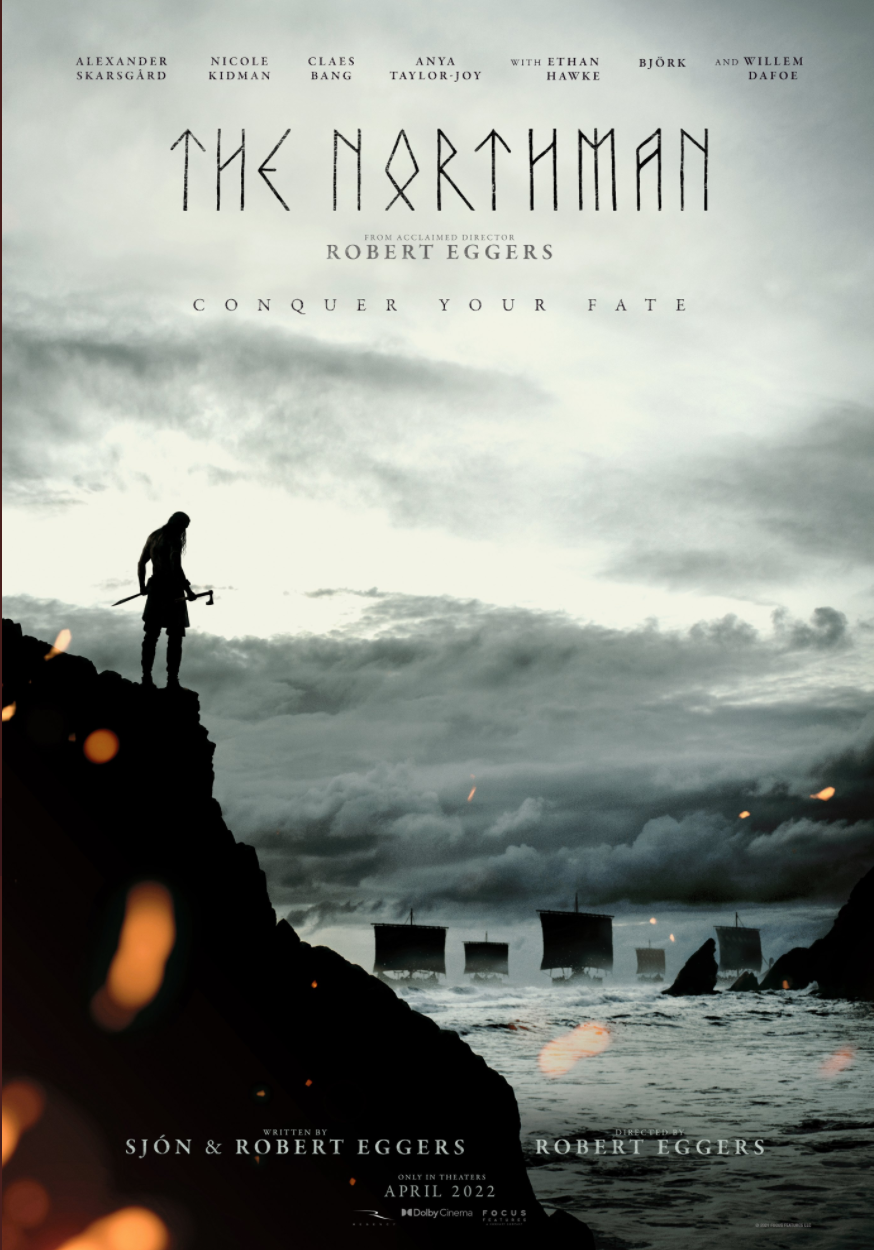
Tatiana Antropova:
1. A Hero
2. The Power of the Dog
3. Drive My Car
4. Parallel Mothers
5. King Richard
6. Cyrano
7. The Worst Person in the World
8. Bergman Island
9. House of Gucci
10. The Card Counter
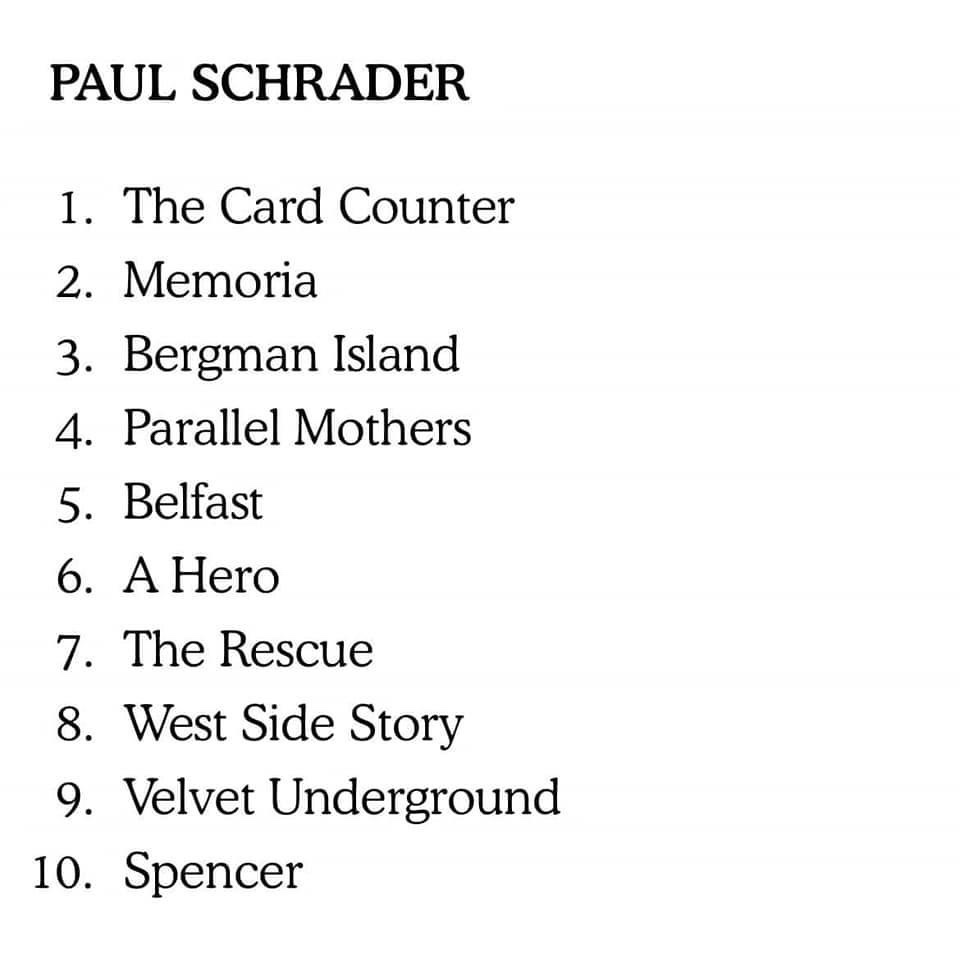
By “top” I mean the most nurturing, the most pleasurable, the most exciting…the 2021 films I felt best about having seen. Note: I’ve been shifting and second-guessing the order since yesterday afternoon (Sunday, 12.19). But I’ve pretty much stopped fiddling around.
I realize that putting Spider-Man: No Way Home in my fourth-place position is an odd call, given that I felt exasperated by the first 65 or 70 minutes. But the final 45 to 50 minutes really pay off, and I have to acknowledge what a bull’s-eye that felt like when I saw it two or three days ago with a cheering crowd.
I can’t honestly say that I felt “good” about having seen The Power of the Dog, although the high level of craft from director Jane Campion is obvious. Same deal with Red Rocket — didn’t enjoy watching it, knew all the while that director-writer Sean Baker knew what he was doing. I can’t say I felt “good” about CODA but I appreciated what it was trying to do and didn’t mind the effort.
I put Peter Jackson‘s 468-minute The Beatles: Get Back in ninth place because it’s really stayed with me.
Update: The disparaging remarks about King Richard and my possibly whimsical decision to put it at the top of the list are duly noted. It’s a sports saga, yes, but mainly a character piece — a study of a gnarly, obstinate fellow who was no day at the beach, and an examination of how character, determination and especially discipline can really make a difference in anyone’s life. I found it inspirational — a film of real value. It made me feel good, and if it didn’t make you feel good…well, okay.
1. King Richard
2. Parallel Mothers
3. West Side Story
4. Spider-Man: No Way Home
5. The Worst Person in the World
6. A Hero (Amazon)
7. Riders of Justice
8. No Time To Die
9. The Beatles: Get Back
10. Zola
11. Cyrano
12. Licorice Pizza
13. The Card Counter
14. In The Heights
15. The Last Duel
16. No Sudden Move
17. Titane
18. The Tragedy of Macbeth
19. Drive My Car
20. Summer of Soul
21. Being The Ricardos
22. Bergman Island
23. House of Gucci
24. Pig
25. Eyes of Tammy Faye
26. Nightmare Alley
27. The Power of the Dog
28. Red Rocket
29. CODA
30. Don’t Look Up
Critically hailed, grueling sits, films that made me feel drained or awful or sleepy: Belfast, Dune, C’mon, Cmon, Spencer, Annette, The Green Knight (and it breaks my heart to say this) The French Dispatch.
Still haven’t seen ’em: The Lost Daughter, Jockey
I haven’t seen Matrix: Resurrections but “I’ve got a feeling.”
Quo Vadis, Aida opened last March, but I regard regard it as a 2020 film.
I listen to this comfort album now and then. Recorded 29 years ago — I don’t care if it dates me. I’d forgotten that it won three Grammies in 1993. It became not only Eric Clapton‘s best-selling album (26 million copies) but the best-selling live album of all time.
All his life Alan Ladd was said to be unhappy about his 5’6″ height. He was supposed to be a strapping leading man and heroic figure, and almost every film he made (including Shane) he had to stand on boxes. He felt like a shrimp. Then again James Cagney was only 5’5″, a perfect illustration of the maxim that it’s not the size of the dog in the fight, etc.
If your reputation precedes you, people tend to assume that you’re larger than life on some level, and that corresponds to an assumption that you might be physically larger than you actually are.
Look at Elizabeth Taylor as she walks out to greet Johnny Carson and Ed McMahon on 2.21.92. She’s so tiny that she complains right away that her feet can’t touch the floor when she sits in the guest chair. She was actually 5’2″ — the same height as the hobbit-sized Mickey Rooney and Debbie Reynolds**. Reynolds’ husband Eddie Fisher left her for Taylor in ’58, and Fisher…good God, he was only 5’5″! Same as Cagney, shorter than Ladd. Taylor gave Fisher the heave-ho when she began her affair with Richard Burton during the filming of Cleopatra in ’62: RB towered over both of them at 5’10” — eight inches taller than Taylor, five over Fisher.
Fisher to Taylor on the set of Cleopatra: “Who’s that big guy?” Taylor to Fisher: “What’s wrong with you…that’s Richard Burton!” Fisher to Taylor: “Oh.”
** Carrie Fisher was 5’1″.

WATCH: Kamala Harris staffer attempts to shut down interview after Harris is asked a question she doesn’t like.
“They’re acting like they can’t hear me,” says the interviewer. pic.twitter.com/jLWG57db3E
— RNC Research (@RNCResearch) December 18, 2021
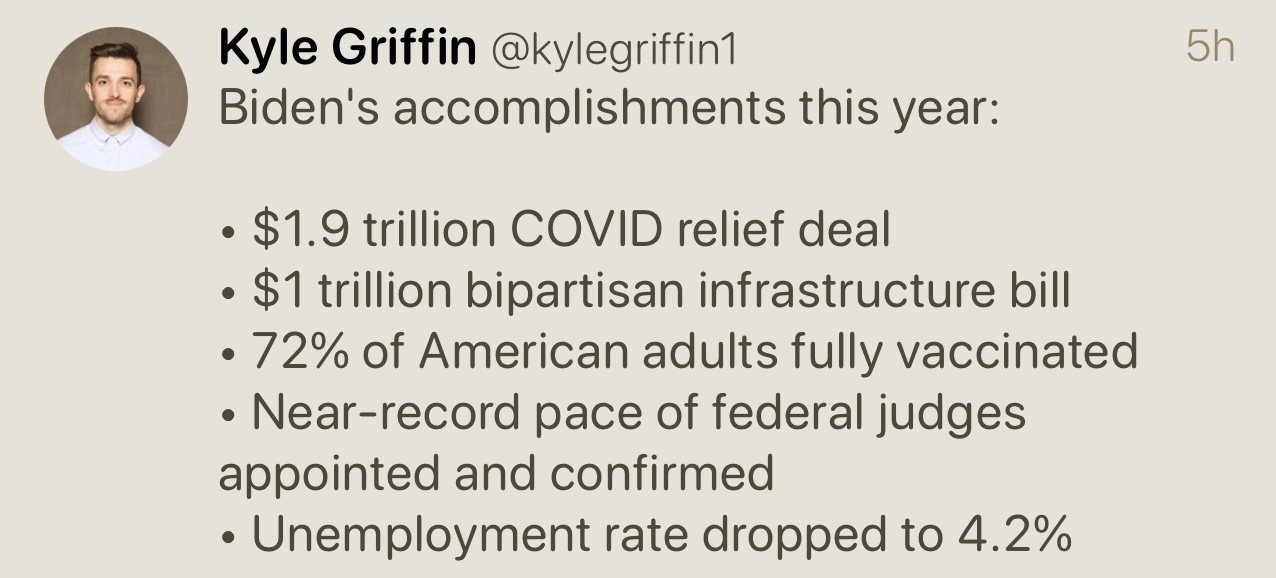
My problem with Eyes Wide Shut was that I was constantly frustrated — bored — by Tom Cruise’s overly formal, generally repressed behavior as Dr. Bill Harford. I didn’t have the slightest interest in the well-being of his marriage to Nicole Kidman’s Alice, and I never believed for a second that Bill and Alice (whose dialogue was so slowly spoken and excruciatingly banal at every turn) had any kind of hot sex life going. So the final lines in the film, spoken by Alice, didn’t land.
I believed that Bill was upset by Alice’s story about a sexual dalliance with a sailor, and I believed he was curious enough about exotic sexuality to sniff around here and there, but I didn’t believe he experienced even a semblance of hormonal arousal during all his nocturnal wanderings. Bill was a prig and a stiff, and Stanley Kubrick’s film, while mesmerizing and perfectly composed, used way too much starch.
I like two scenes in the whole thing — the third-act, cut-the-bullshit, pool-table discussion between Bill and Sydney Pollack’s rich guy, and Bill’s chat with Alan Cumming’s gay hotel clerk.
